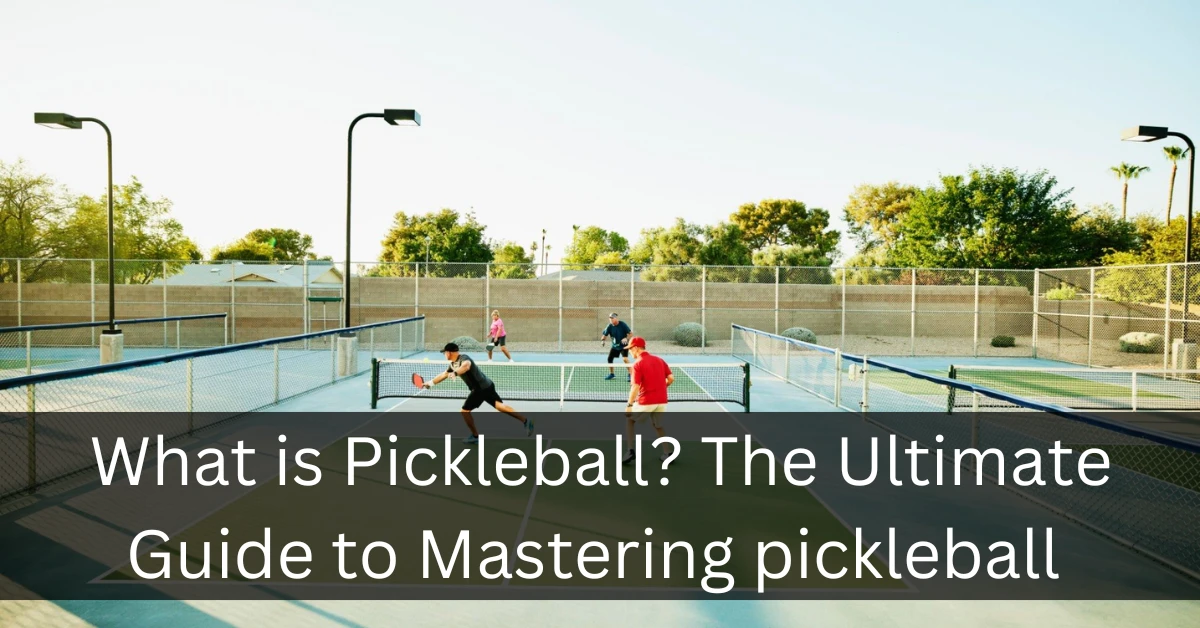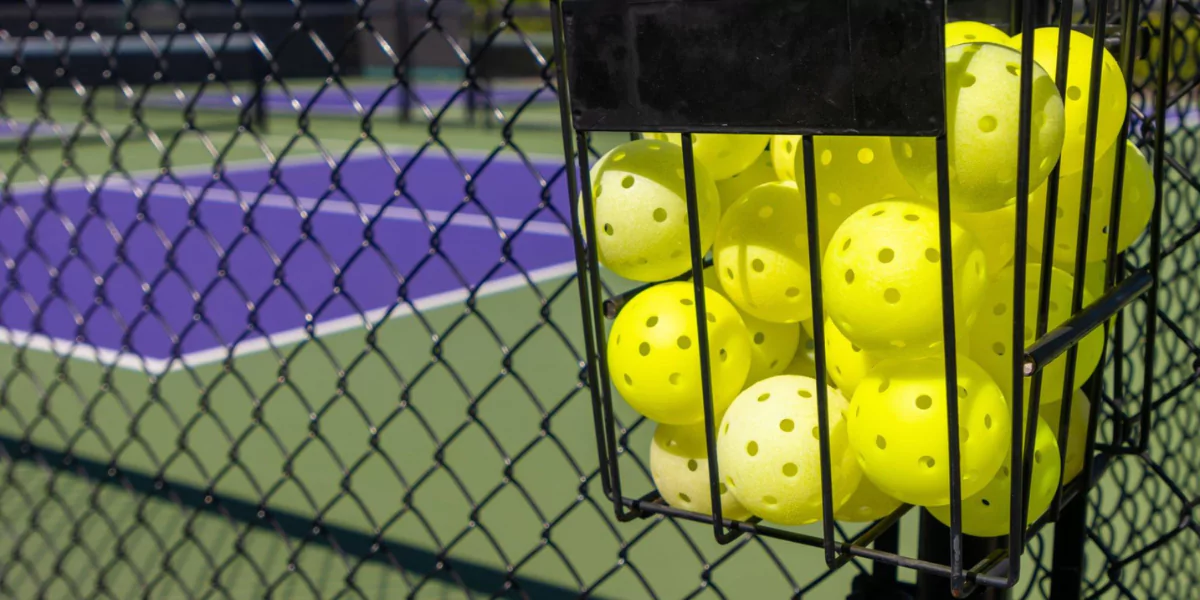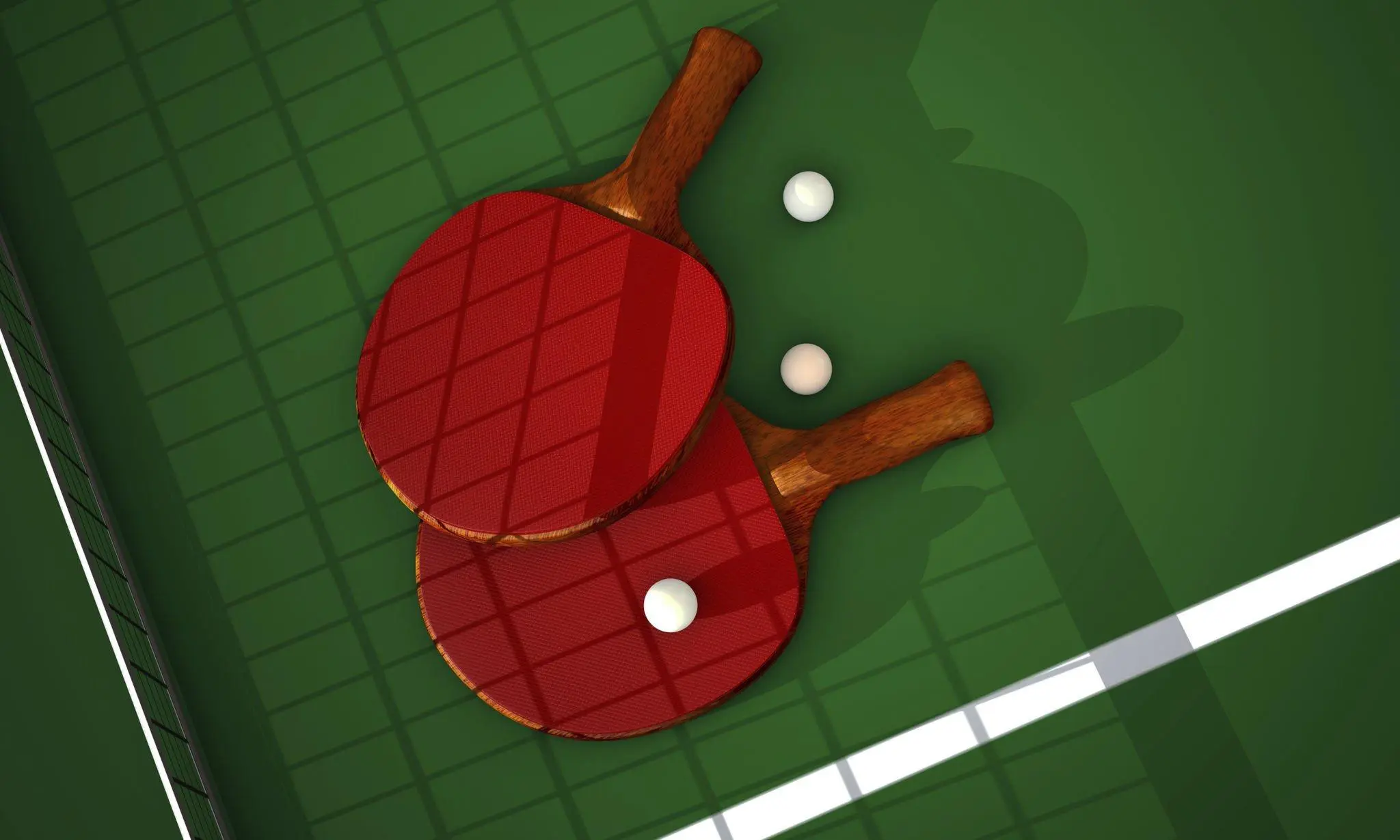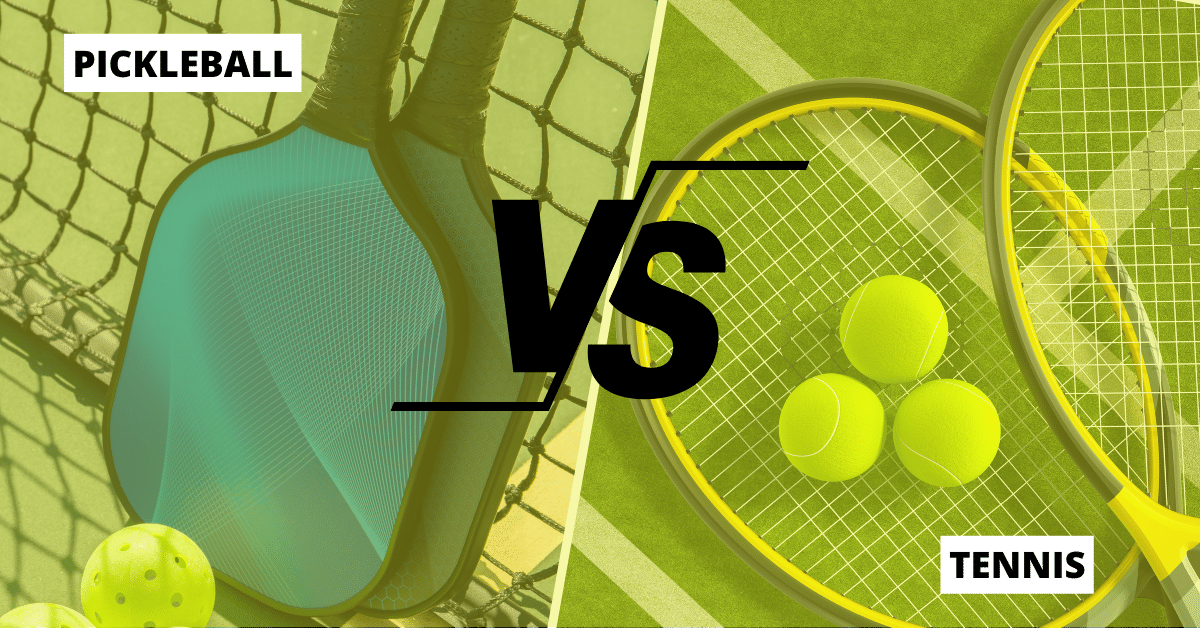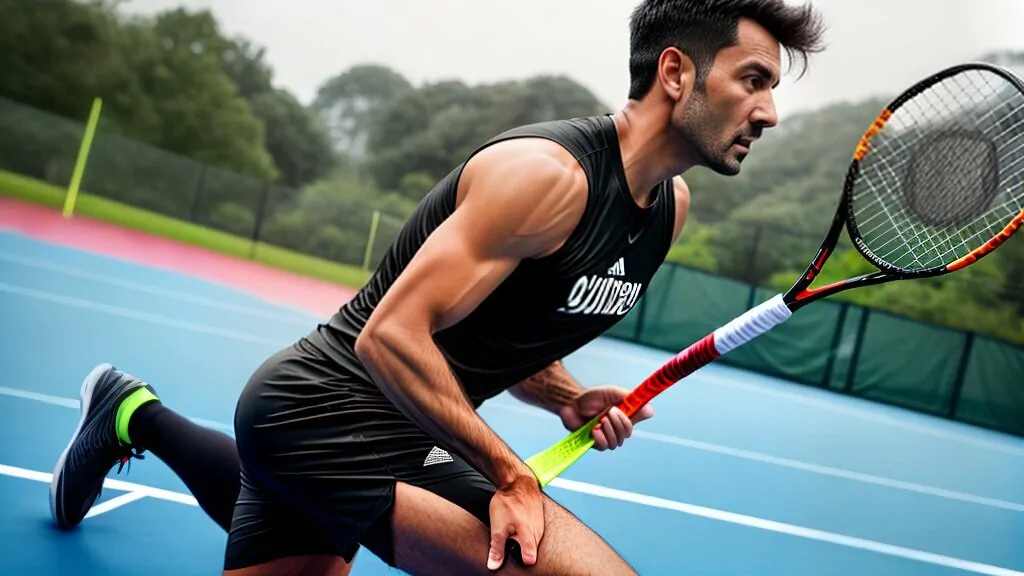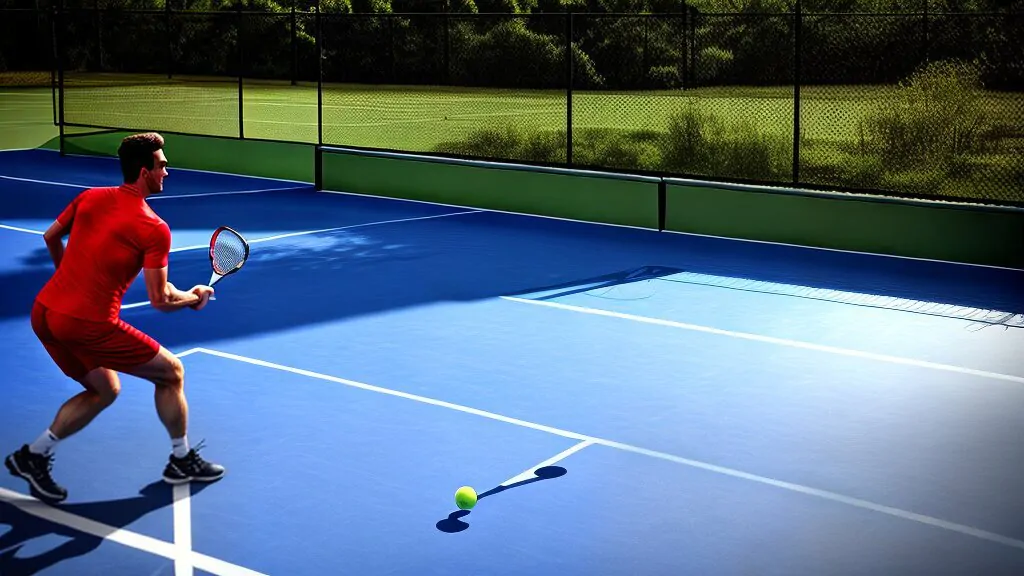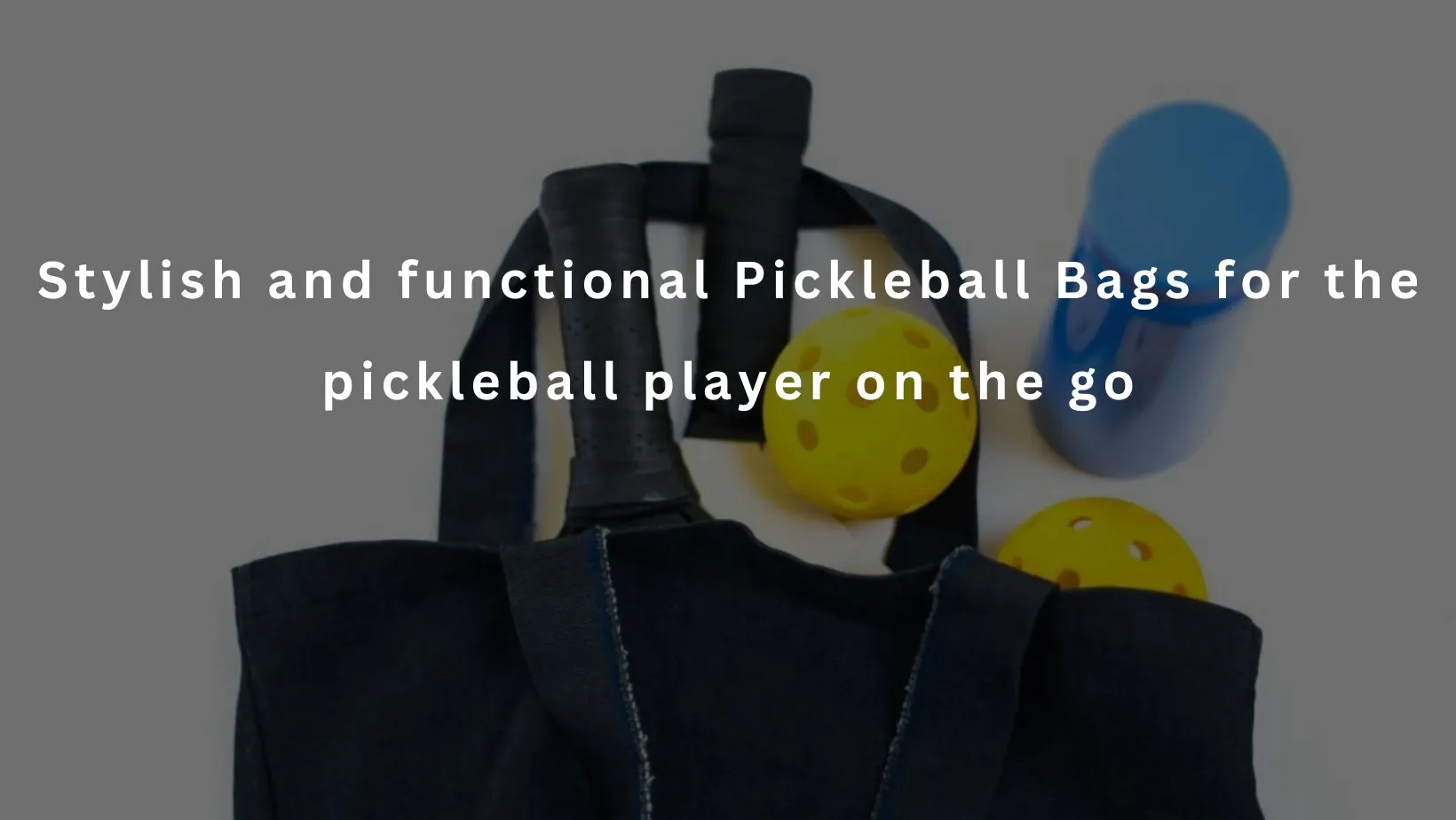Pickleball has become famous for many due to its simple rules, basic tactics, and social aspect. Therefore, if you’re searching for a fun and exciting way to keep healthy, it’s time to learn more about pickleball. See what all the fuss is about and how it can help you stay fit while socializing. Let’s get started!
Fifty years ago, I started playing this little-known sport with a funny name. Now, it’s all the rage.
Bill Gates
What is Pickleball & How to Play this Game?
Joel Pritchard, Bill Bell, and Barney McCallum invented pickleball in 1965. The game used to be played with a Wiffle ball and wooden paddles. However, it is now played with a plastic ball and lightweight composite paddles.
In 2022, the sport gained a lot of popularity, especially in the United States, with over 3 million players. USAPA
USAPA
Pickleball is played on a badminton-sized court with a net similar to but smaller than a tennis net. The court is separated into two halves by a net, with a volley zone in front and a serve court in the back. The game can be played as singles or doubles with two or four players.
To begin the game, the serving team must serve the ball from the right side of the court to the opposite side of the net. Before the receiving team can return the serve, it must first land in the service court and bounce once. The receiving team has the option of allowing the ball to bounce or hitting it back without allowing it to bounce. The ball may be volleyed within the volley zone, but it must be bounced once before being hit outside the volley zone.
Points are awarded when the serving team wins a rally or the receiving team commits a fault. After each point, players trade sides, and the first team reaching 11 points (with a two-point lead) wins the game.
Pickleball has its own rules, such as the “bounce rule.” This rule compels players to allow the ball to bounce once before hitting it in the serve and return.
Players must also serve underhand; the ball cannot be hit above the waist. Players may not walk into the non-volley zone to hit a volley. If a player hits the ball out of bounds, the opposing side scores a point.
Pickleball can be played on a separate court or modified tennis or badminton surface. The sport has gained appeal due to its simplicity, social aspect, and health benefits.
Why Is It Called Pickleball & History of Game from 1965 to 2022:
The family dog of one of its co-inventors, Joel Pritchard, is the source of the game’s unusual name: Pickleball. In 1965, Pritchard and his friend Bill Bell wanted to do something fun with their families. They were looking for an activity to enjoy on a calm summer day. They decided to explore options in Bainbridge Island, Washington. They collected a plastic ball with holes, ping pong paddles, and a badminton net as their first equipment.
The original form of the game they played had a lot smaller court and had different regulations than pickleball as we know it today. Pickles, a cocker spaniel who the Pritchard family adopted as the game progressed, tended to take the ball and run off with it. The moniker “pickle’s ball” remained since the family started calling the game in jest.
The rules were defined, and the game improved over time to become the pickleball sport we know today. So there you have it—a playful and mischievous dog that couldn’t resist joining in on the fun and gave pickleball its name.
40+ Years of Pickleball: How the Game Rules and Its Gear Have Changed?
Here is a table summarizing the key developments in the game of pickleball from 1965 to 2023:
| Year | Development Of Game |
|---|---|
| 1965 | Joel Pritchard and Bill Bell invent pickleball on Bainbridge Island, Washington. |
| 1972/1976 | The first pickleball tournament was held in Tukwila, Washington, with a total of seven players. The first pickleball set is sold commercially by Pickle-Ball, Inc. |
| 1984 | The USA Pickleball Association (USAPA) was founded to promote and develop the sport of pickleballSid Williams led U.S.A.P.A. from 1984 until 1998. Frank Candelario took over until 2004. |
| 1990’s | The first national championship was held in Arizona, with 64 players competing in the singles and doubles events. Specialized pickleball paddles begin to replace the original wooden paddles used in the early years. |
| 2001 | Earl Hill introduced pickleball to the Arizona Senior Olympics. 100 golfers attended the Surprise, AZ tournament at Happy Trails RV Park. The biggest event ever played. In a few years, approximately 300 players participated. |
| 2005/2008 | The first national pickleball championship is held in Buckeye, Arizona. The first US Open Pickleball Championships are held in Naples, Florida. |
| 2010 | The International Federation of Pickleball (IFP) is established to promote the sport worldwide |
| 2013/2016 | Pickleball is recognized as a sport by the International Olympic Committee (IOC). The USAPA releases a revised rulebook with updated rules and guidelines for playing pickleball. Places to Play exceeds 10,000 courts and ends the year with 12,800 indoor and outdoor courts. |
| 2017 | The first professional pickleball league, the APP Tour, is established. The USAPA introduces a new skill rating system to help players of different levels find appropriate competition. USAPA had over 20,000 members and oversaw more than 1,000 tournaments across the United States. |
| 2018 | The first televised pickleball tournament, the US Open Pickleball Championships, is broadcast on CBS Sports. Pickleball was the fastest-growing sport in the United States, with over 3 million players nationwide.The USAPA announces that pickleball will be included in the 2021 National Senior Games, and also introduces new rules regarding time limits and scoring. |
| 2019/2020 | Pickleball experiences a surge in popularity due to the COVID-19 pandemic, with many people turning to the outdoor sport for exercise and socialization.The USAPA and IFP announce a partnership to work together to promote and grow the sport globally. The first Professional Pickleball Association (PPA) Tour is established. First full-time CEO Stu Upson joins USA Pickleball in December. |
| 2021 | The USAPA announces plans to launch a professional pickleball league, the PPA Tour, in partnership with professional sports management company Pro Pickleball Association. The Tokyo 2020 Olympics features a pickleball exhibition event. The Sports and Fitness Industry Association found that pickleball is the fastest-growing sport in the US (SFIA).Around 25 nations compete in Spain’s first World Pickleball Championships. |
| 2022/2023 | The Sports and Fitness Industry Association called it the fastest-growing US sport in 2022, with over 4.8 million players. The USAPA declared in 2022 that the’spin serve’ would be banned in 2023. The 2022 APP Tour contains 32 tournaments in five countries with 800 players per tournament. Expecting $2 million in prize money. |
How to start playing pickleball?
Pickleball is a fantastic sport that is gaining popularity all over the world. More people are playing paddle sports because the rules are easy and the atmosphere is friendly.
No need to worry if you don’t know much about pickleball. In this post, we’ll go over the basics and give you tips to improve your game. We’ve got you covered, from learning the rules to finding a club or league to join.

Learn the Rules
The first step in learning how to play pickleball is to learn the rules. While it is comparable to other racquet sports, it has its own rules. Serving underhand, staying out of the kitchen (the non-volley zone), and playing to 11 points are some fundamentals (with a two-point lead). A complete set of rules can be found online, or you can ask an experienced player to instruct you.
Practice Your Serve
One of the most important aspects of pickleball is the serve. This is your chance to prove your point and force your opponent to defend himself. Regularly practice your serve, trying varying spins and speeds to determine what works best for you. Remember to serve underhand and toward the rear of the court.
Improve Your Footwork
Pickleball relies heavily on footwork. It’s critical to move swiftly around the court to get into shooting positions. Perform agility and foot speed workouts, such as ladder drills or immediate steps. You’ll be shocked at how much strong footwork can improve your game.
Practice Your Shot
Pickleball calls for various shots, such as volleys, smashes, and dinks. Practice each shot separately, concentrating on technique and accuracy. As you get better at each shot, try different ways to combine them to make more complex strategies.
Join a Pickleball Club or League
Start a pickleball club or league in numerous ways. First, research local choices. Find local pickleball groups or leagues online or at your community center or sports facility.
Contact possible groups or leagues to learn about membership requirements and how to join. Several clubs and leagues have websites or social media profiles where you can contact them or join.
To meet other players and learn about pickleball, join local tournaments or open play sessions. These gatherings are fantastic for networking with local pickleball players.
Find a pickleball group and start playing regularly with a little research and outreach.
Equipment and gear needed
To begin playing pickleball, you must first evaluate essential equipment and gear. This section will describe basic pickleball equipment, including paddles, balls, court shoes, clothing, and safety glasses.
Pickleball is a sport enjoyed by people of all ages and skill levels. This game is played on a court the size of a doubles badminton court and blends tennis, badminton, and table tennis. Proper equipment and gear are crucial for success and safety in any sport. In this piece, we will discuss, among other things, pickleball paddles, balls, court shoes, men’s and women’s clothing, and safety glasses.
Pickleball paddle:
The paddle is the most significant piece of equipment for playing pickleball. A well-constructed paddle should be light and sturdy, easy to grasp, and provide excellent control over the ball. Wood, graphite, and composites are used to manufacture paddles. A quality paddle should also have a pleasant grip allowing a secure hold while playing.
Pickleball balls:
They are lightweight, have wider holes than wiffle balls, and are durable enough for pickleball.
A baseball-sized pickleball weighs 0.9 ounces. Yellow or white indoor balls are softer. They’re suitable for gyms and indoor courts because they don’t bounce as high or make as much noise. Outdoor balls are tougher, orange or yellow, and have smaller holes.
They are strong, work on different courts, and are designed to be easily seen by players in different lighting.
Consider court type, play level, and personal preferences while choosing pickleball balls. Some players like soft, slower balls, while others like harder, faster ones. When outdoor games, wind, and humidity can affect the ball. Players can choose from many pickleball ball colors and varieties.
Court shoes:
Pickleball needs good shoes for safety and performance due to its high movement requirements. Court shoes give outstanding support, traction, and stability on the court. These are meant to make players less likely to slip, fall, or get hurt in other ways while playing. It is key to choosing shoes that fit well and gives your feet the support they need.
Clothing for Men and Women:
Men and women have many pickleball gear options. They wear comfortable, effective pickleball shorts; compression, board, and athletic shorts come in various lengths. Pickleball shorts are lightweight, breathable, and often contain pockets for balls and other items to keep players cool.
Women can wear pickleball skirts and dresses. These designs and lengths are more feminine. These skirts and dresses use breathable, comfortable materials like shorts, providing coverage and mobility while playing.
Men and women can wear t-shirts, tank tops, and performance shirts. These moisture-wicking tops keep athletes dry and comfortable. Plain and patterned varieties are available.
Safety glasses:
Safety glasses are pickleball eyewear. These spectacles protect players’ eyes from wayward balls and unintentional hits. Shatterproof safety glasses sit securely on the player’s face to prevent them from coming off.
Wearing pickleball safety glasses can protect your eyes from injuries and help you focus better during the game.
Safety glasses with anti-fog and UV protection improve players’ vision and comfort.
What is Court Dimension and Net in pickleball?
If you’re a newbie to pickleball, you might be curious about the court’s appearance and dimensions. The good news is that the court is simple and only takes up a little space.
We will explain the standard court size. We will also explain the net height. Additionally, we will explain the distance from the non-volley line. Lastly, we will explain the service boxes and non-volley line.
Standard Size and Layout:
A pickleball court is typically 20 feet wide and 44 feet long, around the same size as a double badminton court. A center divides the court into halves, and a non-volley line further divides each into two service courts. At the back of the court, there is also a baseline.
Net Height and Distance from Non-Volley Line:
Pickleball nets are 36 inches high on the sidelines and 34 inches high in the center of the court. The net is in the center of the court and stretches to the sides. The non-volley line, sometimes called the kitchen line, is 7 feet from the net. This space is significant because it keeps players from getting too close to the net and hitting volleys from that close range.
Service Boxes and Non-Volley Line:
The service boxes are 10 feet long and 20 feet wide on either side of the centerline. The non-volley line is 7 feet from the net and runs the length of the court. The non-volley line keeps players from hitting volleys while standing too close to the net.
Players must keep both feet behind the non-volley line when striking a volley. However, they can walk into the kitchen area once the ball bounces.
Also, anyone who wants to play pickleball needs to know how big it is and how it’s set up. The court is 20 feet wide and 44 feet long, with a centerline dividing it in half. The net is 36 inches tall on the sides and 34 inches tall in the middle of the court. It is positioned 7 feet away from the non-volley line in the center.
The service boxes are 10 feet long and 20 feet wide, with the non-volley line 7 feet away from the net. You’ll be able to play pickleball confidently and with these measurements and lines.
Singles vs. Doubles in Pickleball: Key Differences and Choosing Your Game
One of the first decisions you’ll have to make if you’re a beginner at pickleball is whether to play singles or doubles. While both game variants require hitting a lightweight ball with a paddle, court size, scoring, and gameplay differ significantly.
Here, we’ll compare singles and doubles pickleball and discuss the pros and cons of each style. By the end, you’ll have a better idea of which sort of play will suit your skill level, fitness level, and personal preferences.
Pickleball Singles vs. Doubles: Major Differences and Selecting Your Game
Pickleball is a popular racquet sport that can be played solo or in pairs. Both game versions contain similarities, but there are some significant differences to consider while picking whether to play.
Key Differences between Singles and Doubles
On a small court, one player competes against another in a singles competition. There are 11 points in the game, and the serve is always diagonal. Singles play requires more running and agility because the players must cover the full court alone.
Two players are on each side of a wide court in doubles play. The serve can be aimed at either opponent, and games are played to a maximum of 21 points. As players coordinate their moves and shots to cover more ground in doubles, it necessitates more teamwork and communication.
The Benefits and Drawbacks of Singles Play
Singles play is good for fitness and endurance, as it’s a great cardio workout that requires high levels of fitness. Because there is no teammate to rely on, it also allows for more strategic play and individual performance.
However, it can be more mentally demanding because the player must maintain focus and motivation throughout the game.
The Benefits and Drawbacks of Playing Doubles
Playing doubles allows for a social experience as players can talk and support each other during the game. It requires less running and stamina, making it a great option for athletes of any age and fitness level.
Players need to be patient and willing to compromise to adapt to their partner’s style and ability. Consider your preferences, fitness level, and skill set while deciding between singles and doubles.
Here are the strategies for pickleball double to built you pressure on your opponent.
It may be for you if you enjoy more challenging and independent games. Doubles play is better if you like a more social and collaborative experience. Different game types have benefits and can be enjoyable for improving racquet skills and staying active.
What is Serving and Scoring in Pickleball
Pickleball, a popular racquet sport that combines aspects of tennis, badminton, and ping-pong, requires serving and scoring. Learning serving and scoring can be challenging for beginners, but with practice, these principles will become natural.
We’ll discuss several servings you can utilize to gain an advantage over your opponents. We’ll also discuss the game’s simple scoring system and the points and games used to select. By the conclusion, you’ll thoroughly understand the fundamentals of pickleball serving and scoring. You’ll be well on your way to becoming a skilled player on the court.
Serving and Scoring in Pickleball: Mastering the Fundamentals
Pickleball is a high-energy sport that mixes aspects of tennis, badminton, and table tennis. Knowing how to serve and score is important for success in tennis, whether you’re new or experienced. This article will discuss the various types of serves, scoring rules and procedures, and the points and games that comprise a match.
Types of Serves: Dazzle Your Opponents
There are various types of services in pickleball, each with its advantages and disadvantages. The most popular is the underhand serve, which involves swinging the paddle under the ball and making contact below the waist. This service is simple to learn and can be useful for keeping the ball low and forcing your opponent to hit a weak return.
The topspin serve, which includes adding spin to the ball by brushing upward with the paddle, is another popular serve. This serve is more difficult to execute, resulting in a more fierce and unpredictable shot. Additional servings are the lob serve, slice serve, and drop shot serve.
Scoring Rules and Methods: Keep Track of the Game
Scoring in pickleball is straightforward. The serving team receives points, and games are played for 11 or 21 points, according to players’ preferences. To win a game, a team must have a two-point edge over the opposing team.
If the score is tied at 10 or 20 points, the game continues until one team gains a two-point advantage. Players generally employ a scorekeeper, a chalkboard, or a whiteboard to maintain scores. Players may also use electronic scoreboards or apps in specific circumstances.
Scoring Rules and Methods: Keep Track of the Game
Scoring in pickleball is straightforward. The serving team receives points, and games are played for 11 or 21 points, according to players’ preferences. To win a game, a team must have a two-point edge over the opposing team.
If the score is tied at 10 or 20 points, the game continues until one team gains a two-point advantage. Players generally employ a scorekeeper, a chalkboard, or a whiteboard to maintain scores. Players may also use electronic scoreboards or apps in specific circumstances.
Types of Shots and Techniques in Pickleball
Are you interested in taking your game to the next level? Look no further; in this post, we’ll take you through the various types of shots and tactics utilized in pickleball. Whether a seasoned pro or a newcomer, learning these shots and approaches can make or break your game on the court.
We’ll discuss the ins and outs of each shot, from strong drive strokes to delicate dinks, and provide ideas on how to use them successfully. So, take your paddle, and let’s go!
Mastering the Fundamentals Techniques
Pickleball requires quick reflexes, agility, and finesse. To be successful on the court, players must be skilled at a range of strokes and strategies for controlling the ball and outmaneuvering their opponents. This post will look at the various pickleball strokes and methods, such as drive shots, dinks, smashes, volleys, overheads, drop shots, and 3rd shots.
Drive Shots: Hit it Hard
Drive shots are quick, low shots hit with power and speed. They are often struck from the back of the court and are intended to push the opponent back and allow the player to progress forward towards the net. Drive shots necessitate a great deal of wrist and arm strength to perform, making them a valuable shot for players looking to add more power to their game.
Dinks: Play the Net Game
Dinks are short, soft shots with a modest upward slant. They are used to drop the ball over the net and land in the opponent’s non-volley zone. Dinks are usually struck from the front of the court and require more delicacy than power. They are employed to slow down the game and create chances for the player to get to the net.
Click here to mastering the art of dinking in pickleball: dominate, your opponents with experts tips
Smashes: Bring the Heat
Smashes are powerful shots directed downward toward the opposing team’s side of the court. These can be struck anywhere on the court in response to high balls or lobs. Smashes cause the ball to bounce high, making it harder for the opponent to return it. They demand a lot of strength and accuracy to complete; therefore, they’re essential shots for players who wish to dominate the net.
Volleys: Control the Game
Volley shots are an essential component of the pickleball skill set. The player at the net hits the ball before it bounces. This type of shot demand fast reflexes, hand-eye coordination, and timing. Because the net in pickleball is only 36 inches high, players have less time to react and less area to knock the ball over the net.
Volley shots pressure the opponent by striking the ball fast and accurately with a forehand or backhand grip. Volley shots can also score points or set up winners.
A successful volley shot requires strong footwork and being in the correct position at the net. Also, they should be well-versed in gripping techniques and able to predict the ball’s trajectory. Pickleball volleys require practice and technique.
Drop Shots: Change Up Your Game
A drop shot is a soft shot played just over the net and intended to land in the non-volley zone of the opposing player. Drop shots are very successful as a surprise shot since they catch the other player off guard and create an opportunity for a winning shot.
Here is Top drills for a winning drop shot in pickleball in 2023.
3rd Shots: Play the Strategy Game
The third shot drop comes after the serve and is often utilized to regain game control. The third shot is frequently played as a drop or a soft shot, allowing the serving team to get into a better position on the court. Pickleball’s third shot is a crucial strategic shot; mastering it can mean the difference between winning and losing.
Finally, learning the various types of shots and approaches in pickleball is critical for success on the court. Players can create a more sophisticated and successful game and outmaneuver their opponents with ability and finesse by knowing the various shots and techniques.
What are Strategies and Tactics in Pickleball?
You’ve got it! One of the best ways to enhance your pickleball game is to concentrate on your strategy and tactics. You can acquire a substantial advantage over your opponents by improving your court positioning, shot selection, communication and teamwork, and serve, volley, and dinking methods.
In this part we will examine the various pickleball methods and tactics and how they can help you dominate the court. Thus, whether you’re a novice or a seasoned player, keep reading to learn how to take your game to the next level with these effective methods and tactics.
Court Positioning:
Court location is one of the most critical factors in pickleball strategy. Your court position can affect your ability to make shots, cover the court, and return shots to your opponent. Ideally, you want to position yourself to cover as much of the court as possible while still reacting to your opponent’s shots. Monitoring your opponent’s positioning and adapting your own accordingly is also critical.
Shot Selection:
The shots you take can also have a significant impact on your game. Various shots have varying degrees of power, precision, and spin, and selecting the right shot at the right time can mean the difference between winning and losing a point. Knowing which shot will be most successful in any particular situation is critical.
Communication and Teamwork:
Pickleball is frequently played in doubles; thus, communication and teamwork are vital. Communicating with your partner allows you to synchronize your efforts, cover more ground, and avoid unforced errors. It’s also critical to understand your partner’s skills and limitations and to alter your game accordingly.
Dealing with Different Playing Styles:
Every player has a distinct playing style, and it is critical to be able to adapt your strategy and tactics accordingly. Whether you’re playing against a power or finesse player, anticipating their shots and adjusting your positioning and shot selection can offer you an advantage.
Serve Strategies:
One of the most essential shots in pickleball is the serve, and an effective serve strategy may set the tone for the entire game. You may keep your opponents guessing and make it more difficult for them to return your shots by altering your serves.
Volley Strategies:
Another essential shot in pickleball is the volley, and having a successful volley strategy can help you control the game’s tempo. You may pressure your opponents and compel them to make mistakes by positioning yourself effectively and making clever shot selections.
Dinking Strategies:
Under certain conditions, the dink is a delicate shot that can be extremely effective. You can create openings in your opponent’s defense and position yourself for winning shots by learning dinking tactics and applying them to your strategy.
Finally, strategy and tactics are critical components of pickleball. You may boost your chances of winning by learning court positioning, shot selection, communication and collaboration, coping with diverse playing styles, and serving, volleying, and dinking methods. So remember these ideas and approaches as you prepare to rule the court!
Training and drills for improvement
Pickleball is a fast-paced, thrilling activity involving physical and cerebral abilities. You must engage in frequent training and drills focusing on significant parts of the game to improve your game. This post will look at some fundamental pickleball training and drills that can help you take your game to the next level.
Repetition and practice
Pickleball practice is vital for improving your skills. The more you play, the better you will get. Make it a point to play regularly, whether with a partner or in a group.
Focus on skills you wish to improve during practice, such as your serves or volleys. Repetition is also very helpful since it aids in developing muscle memory and consistency in your shots.
Drills to Improve Technique and Footwork
Drills are a wonderful way to improve your pickleball skills and footwork. There are countless drills you can use to improve various elements of your game. You can practice dinks and drops to enhance your accuracy and control, striking the ball softly over the net.
“Four corners” practice involves striking the ball at each corner of the court while moving around, which is another drill that can help you enhance your footwork.
Strength training and physical conditioning
Pickleball is a physically demanding sport that requires endurance, agility, and quickness. You must engage in regular physical conditioning and strength training to increase your performance on the court. Such workouts include running, jumping, and strength training with weights or resistance bands. These exercises can help you strengthen your core muscles, speed up, and enhance your general fitness.
Mental Preparation and Visualization
Mental preparation and visualization are essential for pickleball success. Players should psychologically prepare by setting clear goals, identifying strengths and limitations, and developing a game strategy. Visualization is a powerful method that mentally rehearses the physical actions needed to successfully execute a shot.
It promotes muscle memory and confidence, allowing players to remain focused and composed under pressure. Players might adopt strategies such as deep breathing and positive self-talk to stay focused and keep a positive mindset during a match.
Pickleball vs. other similar sports
Pickleball is a popular sport that has grown in popularity in recent years. It’s frequently likened to other racquet sports like tennis and badminton. In this post, we will compare pickleball to these two sports and discuss their differences.
Tennis vs pickleball Comparison
Pickleball and tennis are both prominent racquet sports with parallels and distinctions.
The main difference between pickleball and tennis is the size of the court. A pickleball court is substantially smaller than a tennis court, measuring 20 feet by 44 feet against 78 feet by 27 feet. This smaller court size enables a faster-paced game that requires less physical endurance than tennis.
Another significant difference between both sports is the equipment used. Pickleball employs a smaller, lighter paddle made of wood, graphite, or composite.
In contrast, tennis employs a larger, heavier racquet made of graphite or aluminum. Pickleball balls are smaller and have less bounce than tennis balls.
Pickleball is noted for its attention to strategy and placement, whereas tennis is famed for its power and endurance. Pickleball players frequently employ shots like dinks and drops to control the game’s tempo and force opponents out of position.
In contrast, tennis players use aggressive shots like serves and groundstrokes to overpower opponents.
When compared to badminton
Because of their similar gameplay, pickleball, and badminton are frequently compared. Both games require striking a shuttlecock or ball over a net and scoring points by having the shuttlecock or ball fall on the other side of the court. Nonetheless, there are several key distinctions between the two sports.
The size of the court is one of the most noticeable changes. Because a badminton court is smaller than a pickleball court, it is simpler to cover ground and move around the court quickly. The net is likewise higher in badminton, making overhead shots more difficult. Badminton racquets differ from pickleball racquets in that they are longer and thinner.
Another notable distinction is the playing style. Badminton is a finesse-based sport that demands more strategy and patience than pickleball. On the other hand, pickleball is a faster-paced and more combative game that emphasizes rapid reactions and reflexes.
Finally, the scoring system differs, with badminton employing a rally scoring system and pickleball employing either a rally or traditional scoring system.
To summarize, pickleball is a unique sport with parallels and distinctions to other racquet sports such as tennis and badminton. While the gameplay is similar, the changes in court size, racquets, and style of play distinguish pickleball as a distinct and enjoyable sport.
What are Benefits of Playing Pickleball?
Pickleball is an entertaining activity that may provide participants of all ages and abilities with various benefits. Pickleball has something to offer, whether your goal is to enhance your physical and mental health or to have a good time with your friends. In this post, we will discuss the physical and mental health benefits of frequent pickleball play.
Physical health advantages
Pickleball can positively affect your physical health, which is one of the sport’s greatest advantages. Pickleball is an excellent method to keep active and get exercise, as participants run, hop, and move around the court while playing. This can enhance cardiovascular health, increase stamina, and build muscle tone and strength.
Balance, agility, and coordination are also enhanced by playing pickleball. You will be continuously modifying your movements and reacting to your opponent’s moves, which can enhance your reflexes and hand-eye coordination as you play.
Pickleball is a fantastic way to burn calories and maintain a healthy weight. According to the American Council on Fitness, a 150-pound person may burn up to 500 calories every hour playing pickleball, making it a great way to maintain an active lifestyle and a healthy body.
Mental health advantages
In addition to the physical health benefits of frequent pickleball play, there are also significant mental health benefits. Pickleball is a social activity, and playing with friends or joining a local league helps alleviate loneliness and isolation.
Pickleball also reduces tension and anxiety since it requires you to be in the moment and focused on the game. This can enhance mindfulness and diminish unpleasant thoughts and emotions.
Lastly, pickleball is a fantastic way to improve your mood and increase feelings of pleasure and well-being. The sense of accomplishment that comes with enhancing one’s skills and winning a game may be a potent motivator. In addition, the social side of the activity can foster a sense of belonging and connection.
FAQs
What is pickleball and why is it so popular?
Pickleball is a paddle sport combining elements of badminton, table tennis, and tennis. It’s played on a badminton-sized court with a whiffle-like ball and larger ping-pong-like paddles. The game is popular due to its accessibility, social nature, the physical activity it offers, and the less physically demanding nature of the game due to a smaller court size.
What and why is it called pickleball?
The origin of the name “pickleball” is somewhat unclear, but it is commonly believed to have been named after the creator’s dog, whose name was Pickles. However, some sources suggest that the game was actually named after a term used by rowing crews to describe a boat that has been chosen from leftover boats. Regardless of its true origin, the name “pickleball” has become synonymous with the sport and is recognized around the world.
How is pickleball different from tennis?
Pickleball is different from tennis due to its specific features. Pickleball is played on a smaller court than tennis. In Pickleball we uses a lightweight paddle and a plastic wiffle ball instead of a heavier racket and a tennis ball. Pickleball allows for underhand serves and has different rules for doubles play.
Where is pickleball most popular in the country?
Pickleball has gained popularity across the United States, with significant hotspots including Florida, Arizona, California, Utah, Washington, and Texas. However, the sport’s popularity is not limited to these areas, as it continues to grow nationwide.
What are 3 coaching points on how do you serve in pickleball?
When serving in pickleball, here are three coaching points to keep in mind:
- Positioning: Stand behind the baseline, slightly to the side, for a good view and power in your serve.
- Grip and Contact: Hold the paddle firmly but relaxed. Contact the ball at waist level or slightly below, aiming for the sweet spot.
- Placement and Spin: Strategically choose your target area, aiming for the deep part of the opponent’s court. Experiment with different types of serves for variety.
Why is pickleball not an Olympic sport?
pickleball is not currently included as an Olympic sport. The process of adding a new sport to the Olympic program involves several factors, including the sport’s global popularity, participation levels, governance, and infrastructure. While pickleball has gained significant popularity in recent years, it may not have met all the criteria required for Olympic inclusion.
